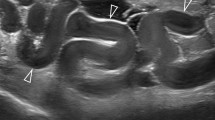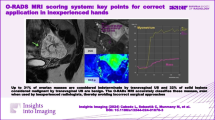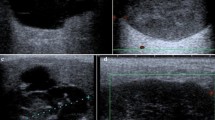Abstract
Background
Despite being formally included in the assessment of patients presenting with lower urinary tract symptoms (LUTS), transrectal ultrasonography (TRUS) is not routinely offered to these patients. This tactic however might not be optimum since data exist on the superiority of TRUS over transabdominal ultrasound in accurately predicting prostate volumes. We aimed to evaluate TRUS as a standard tool in the evaluation of patients with benign prostate hyperplasia (BPH) with a special focus on the potential impact it might have on the decision of open versus transurethral surgery.
Patients and methods
Seventy-one patients presenting with LUTS due to BPH and eventually managed with open surgery based on their preference and prostate volume were included in the protocol. TRUS was performed in all patients preoperatively and calculations of the transition zone were made. These were compared with respective transabdominal calculations of the prostate volume as well as the enucleated specimen weight (W).
Results
TRUS slightly underestimated W by 4.4% (95% CI 10.5, 1.7) while transabdominal ultrasound overestimated it by 55.7% (95% CI 31.8, 79.6). Regression analysis indicated TRUS as a better predictor of W (R 2 = 0.817, P < 0.0005) followed by transabdominal ultrasound (R 2 = 0.669, P < 0.0005). Strictly based on European Association of Urology (EAU) criteria, transabdominal measurements miscategorized 25 cases by falsely assigning them to the open surgery (>80 cc) group while TRUS did so for four cases.
Conclusion
TRUS is more accurate than transabdominal ultrasound in predicting adenoma volume in patients with BPH and its standard use might lead to fewer open approaches, with consequent less morbidity and hospitalization.
Similar content being viewed by others
References
de la Rosette J, Alivizatos G, Madersbacher S, Rioja Sanz C, Nordling J, Emberton M, Gravas S, Michel MC, Oelke M (2007) EAU 2007 guidelines on benign prostatic hyperplasia European Association of Urology, 2007 edn, pp 5–59
Grayhack JT, McVary KT, Kozlowski JM (2002) Benign prostatic hyperplasia. In: Gillenwater JY, Grayhack JT, Howards SS, Mitchell ME (eds) Adult and pediatric urology, 4th edn. LWW, Philadelphia, pp 1401–1470
Kaplan SA, McConnell JD, Roehrborn CG, Meehan AG, Lee MW, Noble WR, Kusek JW, Nyberg LM Jr, Medical Therapy of Prostatic Symptoms (MTOPS) Research Group (2006) Combination therapy with doxazosin and finasteride for benign prostatic hyperplasia in patients with lower urinary tract symptoms and a baseline total prostate volume of 25 ml or greater. J Urol 175:217–220. doi:10.1016/S0022-5347(05)00041-8
Uchida T, Ohori M, Soh S, Sato T, Iwamura M, Ao T, Koshiba K (1999) Factors influencing morbidity in patients undergoing transurethral resection of the prostate. Urology 53:98–105. doi:10.1016/S0090-4295(98)00524-X
Ash D, Flynn A, Battermann J, de Reijke T, Lavagnini P, Blank L, ESTRA/EAU Urological Brachytherapy Group, EORTC Radiotherapy Group (2000) ESTRO/EAU/EORTC recommendations on permanent seed implantation for localized prostate cancer. Radiother Oncol 57:315–321. doi:10.1016/S0167-8140(00)00306-6
Meraj S, Nagler HM, Homel P, Shasha D, Wagner JR (2003) Radical prostatectomy: size of the prostate gland and its relationship with acute perioperative complications. Can J Urol 10:1743–1748
Kalish J, Cooner WH, Graham SD Jr (1994) Serum PSA adjusted for volume of transition zone (PSAT) is more accurate than PSA adjusted for total gland volume (PSAD) in detecting adenocarcinoma of the prostate. Urology 43:601–606. doi:10.1016/0090-4295(94)90170-8
Zlotta AR, Djavan B, Marberger M, Schulman CC (1997) Prostate specific antigen density of the transition zone: a new effective parameter for prostate cancer prediction. J Urol 157:1315–1321. doi:10.1016/S0022-5347(01)64961-9
Zlotta AR, Djavan B, Damoun M, Roumeguere T, Petein M, Entezari K, Marberger M, Schulman CC (1999) The importance of measuring the prostatic transition zone: an anatomical and radiological study. BJU Int 84:661–666. doi:10.1046/j.1464-410x.1999.00214.x
Aus G, Bergdahl S, Hugosson J, Norlén L (1994) Volume determinations of the whole prostate and of adenomas by transrectal ultrasound in patients with clinically benign prostatic hyperplasia: correlation of resected weight, blood loss and duration of operation. Br J Urol 73:659–663. doi:10.1111/j.1464-410X.1994.tb07552.x
Baltaci S, Yagci C, Aksoy H, Elan AH, Gögüs O (2000) Determination of transition zone volume by transrectal ultrasound in patients with clinically benign prostatic hyperplasia: agreement with enucleated prostate adenoma weight. J Urol 164:72–75. doi:10.1016/S0022-5347(05)67452-6
Aarnink RG, De La Rosette JJ, Debruyne FM, Wijkstra H (1996) Reproducibility of prostate volume measurements from transrectal ultrasonography by an automated and a manual technique. Br J Urol 78:219–223
Aarnink RG, Beerlage HP, De La Rosette JJ, Debruyne FM, Wijkstra H (1998) Transrectal ultrasound of the prostate: innovations and future applications. J Urol 159:1568–1579. doi:10.1097/00005392-199805000-00045
Sajadi KP, Terris MK, Hamilton RJ, Cullen J, Amling CL, Kane CJ, Presti JC Jr, Aronson WJ, Freedland SJ (2007) Body mass index, prostate weight and transrectal ultrasound prostate volume accuracy. J Urol 178:990–995. doi:10.1016/j.juro.2007.05.049
Matthews GJ, Motta J, Fracehia JA (1996) The accuracy of transrectal ultrasound prostate volume estimation: clinical correlations. J Clin Ultrasound 24:501–505. doi:10.1002/(SICI)1097-0096(199611/12)24:9<501::AID-JCU2>3.0.CO;2-R
Tewari A, Indudhara R, Shinohara K, Schalow E, Woods M, Lee R, Anderson C, Narayan P (1996) Comparison of transrectal ultrasound prostatic volume estimation with magnetic resonance imaging volume estimation and surgical specimen weight in patients with benign prostatic hyperplasia. J Clin Ultrasound 24:169–174. doi:10.1002/(SICI)1097-0096(199605)24:4<169::AID-JCU2>3.0.CO;2-D
Alkan I, Turkeri L, Biren T, Cevik I, Akdas A (1996) Volume determinations by transrectal ultrasonography in patients with benign prostatic hyperplasia: correlation with removed prostate weight. Int Urol Nephrol 28:517–523. doi:10.1007/BF02550959
Loeb S, Han M, Roehl KA, Antenor JA, Catalona WJ, Loeb S, Han M, Roehl KA, Antenor JA, Catalona WJ (2005) Accuracy of prostate weight estimation by digital rectal examination versus transrectal ultrasonography. J Urol 173:63–65
Lee JS, Chung BH (2007) Transrectal ultrasound versus magnetic resonance imaging in the estimation of prostate volume as compared with radical prostatectomy specimens. Urol Int 78:323–327. doi:10.1159/000100836
Rahmouni A, Yang A, Tempany CM, Frenkel T, Epstein J, Walsh P, Leichner PK, Ricci C, Zerhouni E (1992) Accuracy of in vivo assessment of prostatic volume by MRI and transrectal ultrasonography. J Comput Assist Tomogr 16:935–940
Cabello Benavente R, Jara Rascon J, Monzo JI, Lopez Diez I, Subira Rios D, Lledo Garcia E, Herranz Amo F, Hernandez Fernandez C (2006) Volume determinations of the whole prostate and of the adenoma by transrectal ultrasound: correlation with surgical specimen. Actas Urol Esp 30:175–180
Bland JM, Altman DG (1986) Statistical methods for assessing agreement between two methods of clinical measurement. Lancet 1:307–310
Nathan MS, Seenivasagam K, Mei Q, Wickham JE, Miller RA (1996) Transrectal ultrasonography: why are estimates of prostate volume and dimension so inaccurate? Br J Urol 77:401–407
Acknowledgements
The authors would like to thank Prof. Elias Zintzaras (University of Thessaly, Larissa, Greece) for his assistance and support in statistical analysis.
Author information
Authors and Affiliations
Corresponding author
Rights and permissions
About this article
Cite this article
Stravodimos, K.G., Petrolekas, A., Kapetanakis, T. et al. TRUS versus transabdominal ultrasound as a predictor of enucleated adenoma weight in patients with BPH. Int Urol Nephrol 41, 767–771 (2009). https://doi.org/10.1007/s11255-009-9554-9
Received:
Accepted:
Published:
Issue Date:
DOI: https://doi.org/10.1007/s11255-009-9554-9




